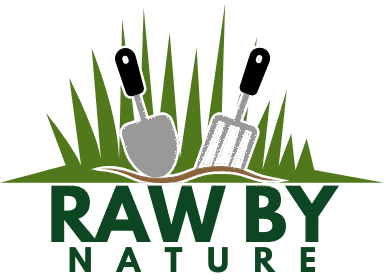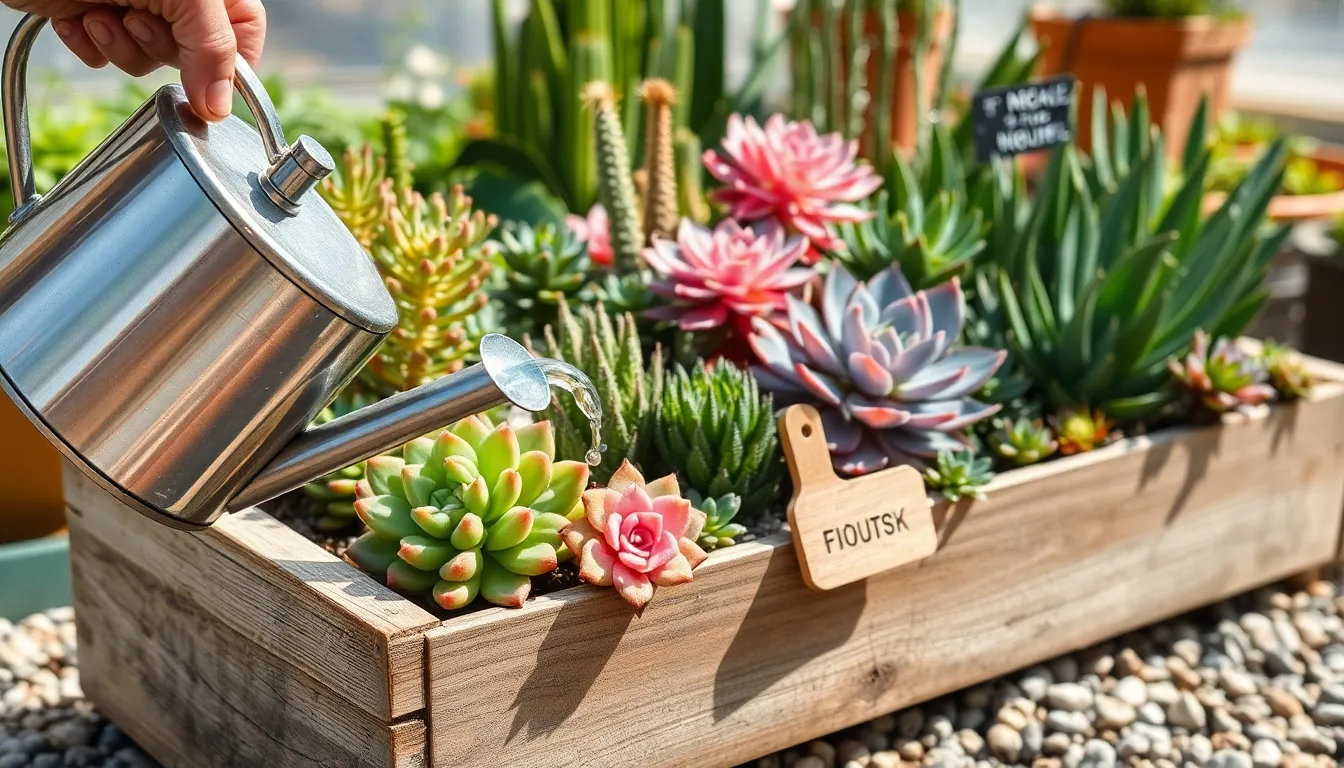Succulents have charmed their way into the hearts of gardeners everywhere, with their striking forms and low-maintenance allure. Whether you’re just beginning your plant journey or have a seasoned green thumb, understanding the nuances of watering these desert beauties is crucial for their vibrant health.
Mastering the art of watering succulents can transform your plant care routine and prevent common pitfalls like root rot or shriveled leaves. In this article, we will explore the delicate balance required to quench your succulent’s thirst properly, ensuring they thrive in your home or garden.
You’ll learn practical techniques for assessing your succulent’s water needs, discover how to identify signs of over and under-watering, and gain confidence in maintaining a healthy watering schedule. By the end, you’ll be equipped with the knowledge to nurture your succulents with ease, watching them flourish with each carefully measured drop.
Assess Succulent Water Needs
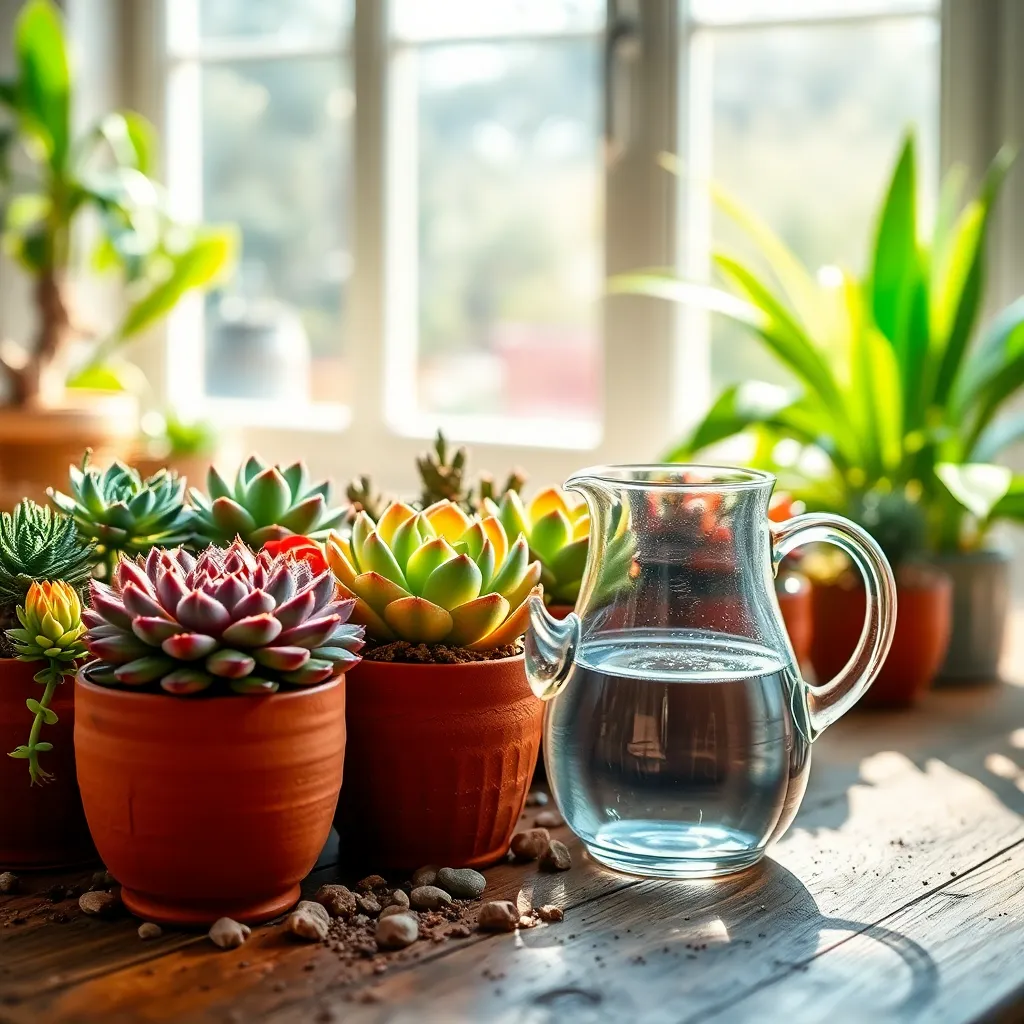
Understanding the water needs of your succulents is crucial for their health and growth. These unique plants store water in their leaves, stems, and roots, allowing them to thrive in dry conditions but making them susceptible to overwatering.
To assess when your succulent needs water, check the moisture level of the soil. A simple way to do this is by inserting a finger or a wooden stick into the soil about an inch deep; if it comes out dry, it’s time to water.
Soil type plays a significant role in determining watering frequency. Use a well-draining soil mix, such as a cactus mix or a blend of potting soil with sand or perlite, to ensure excess moisture doesn’t linger at the roots.
Ensure your succulents are planted in pots with drainage holes, as this helps prevent water from pooling at the bottom. If you notice leaves becoming soft or translucent, reduce watering immediately to avoid root rot.
Advanced gardeners can monitor the weight of the pot to gauge when the plant needs water. A heavier pot indicates moisture is still present, while a lighter pot suggests it’s time for hydration.
Choose Proper Watering Tools
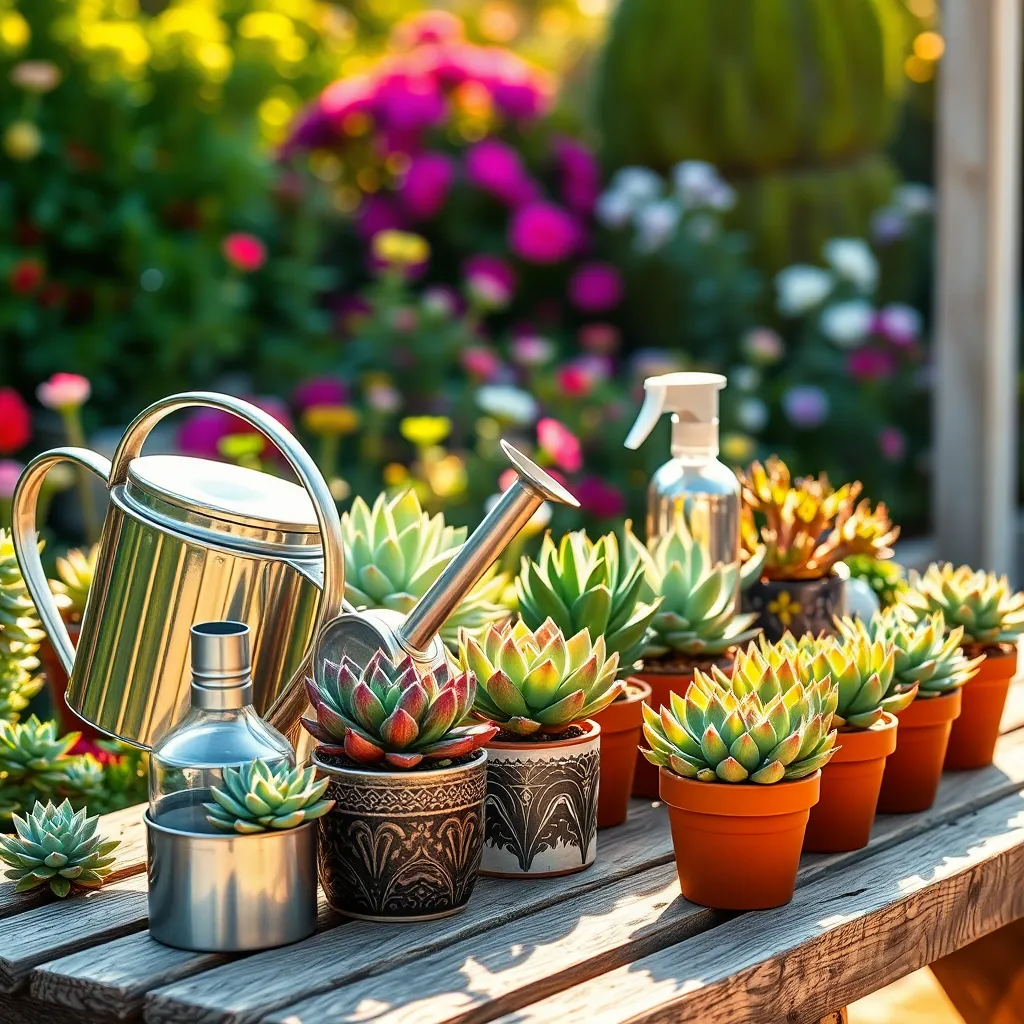
When it comes to watering succulents, choosing the right tools is critical for success. A watering can with a long spout or a squeeze bottle is ideal, as they allow you to direct water precisely to the base of the plant, minimizing the risk of wetting the leaves, which can lead to rot.
Investing in a soil moisture meter can be particularly beneficial for succulents. This tool helps you accurately gauge when your plants need water, preventing overwatering, which is a common mistake for these drought-tolerant plants.
For those with larger succulent collections or outdoor gardens, a garden hose with an adjustable nozzle can be a valuable tool. It can be set to a gentle stream that won’t disturb the soil around your succulents, ensuring a thorough but controlled watering.
Incorporating a drip irrigation system can elevate your succulent care, offering a more advanced solution for consistent watering. This system delivers water directly to the roots, making it efficient and conserving water, especially useful in regions prone to drought.
Water Deeply and Infrequently
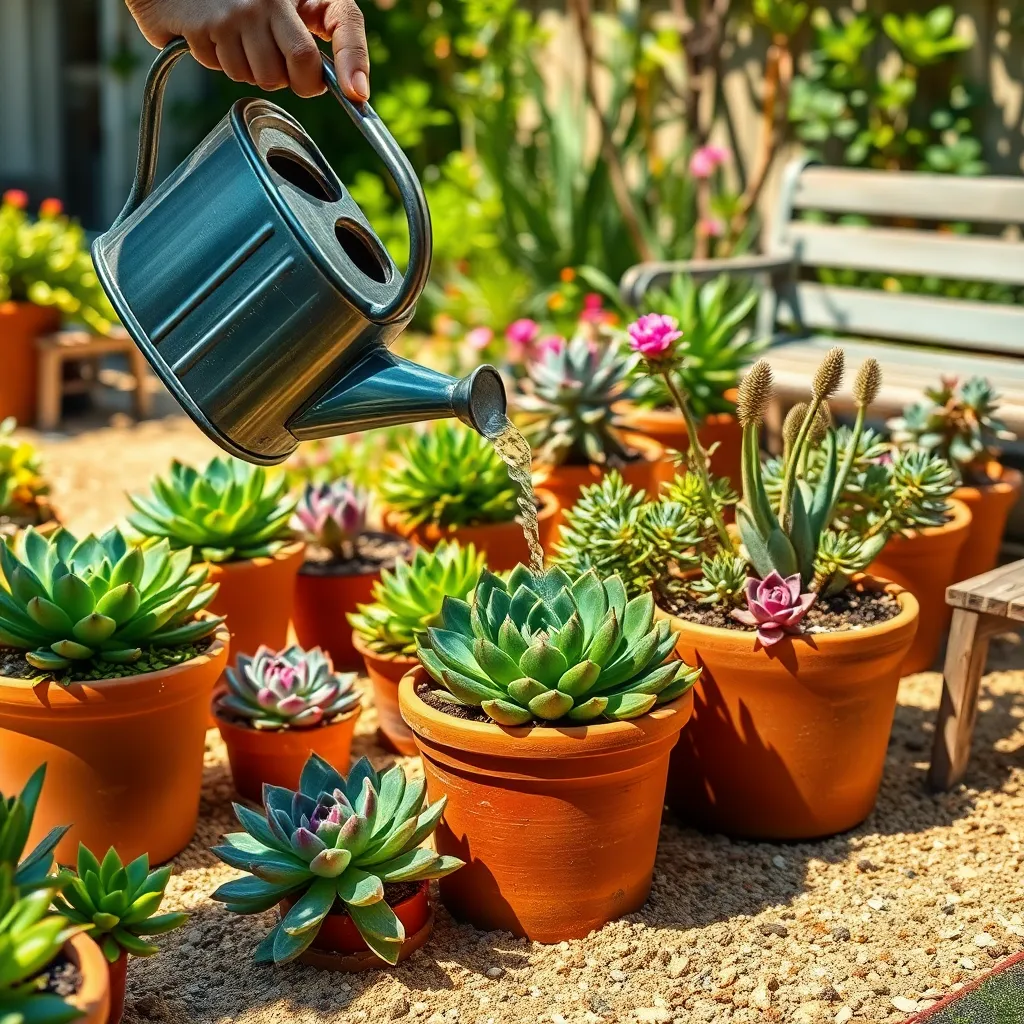
Watering succulents deeply and infrequently is crucial for their health and growth. Succulents store water in their leaves and stems, so they require a different watering approach than other plants.
Begin by ensuring the potting mix is completely dry before watering your succulents again. This usually means watering every 10-14 days, though it can vary based on your climate and season.
When you do water, water thoroughly until it flows out of the drainage holes at the bottom of the pot. This method encourages the roots to grow deeper into the soil, making the plant more resilient.
Using the right soil is equally important for effective watering. Opt for a well-draining cactus or succulent mix, which usually contains sand or perlite to prevent waterlogging.
Advanced gardeners can use a moisture meter to check the soil moisture levels at the root zone. This tool helps ensure you’re not watering too early, which can lead to root rot.
Remember, it’s better to underwater than to overwater succulents. Too much water is one of the most common mistakes that leads to their decline, so err on the side of caution.
Allow Soil to Fully Dry
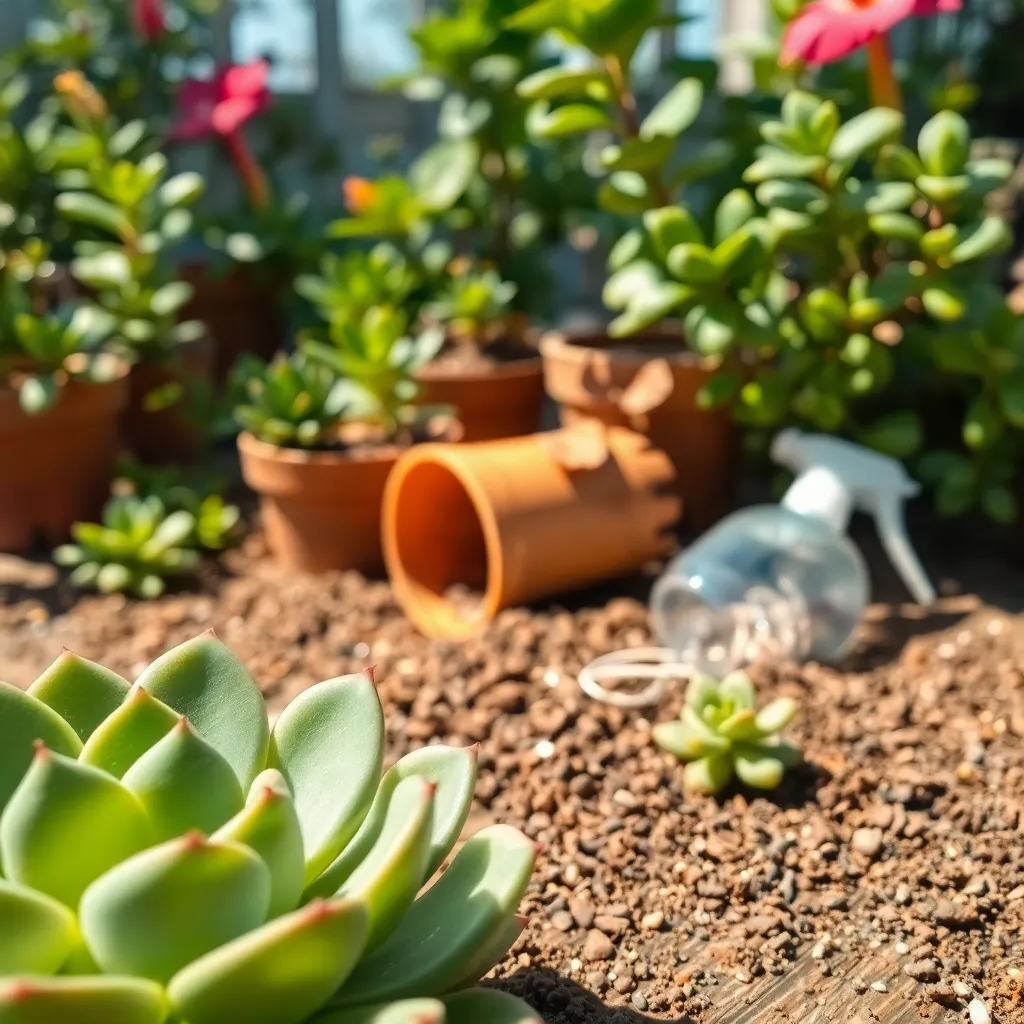
Succulents thrive when their soil is allowed to completely dry out between waterings. This is because they are adapted to arid environments where water is scarce, making them efficient at storing moisture in their leaves and stems.
It’s crucial to use a well-draining soil mix specifically designed for succulents. A mix that includes components like coarse sand, perlite, or pumice helps ensure excess water drains away quickly, preventing root rot.
Before watering, check the soil’s moisture level by inserting your finger about an inch deep into the pot. If the soil feels dry at this depth, it’s time to water; if it’s still moist, wait a few more days before checking again.
For those with more experience, consider using a moisture meter for more precise watering intervals. This tool can help you monitor the soil’s exact moisture content, ensuring your succulents are neither under- nor over-watered.
Adjust for Seasonal Changes
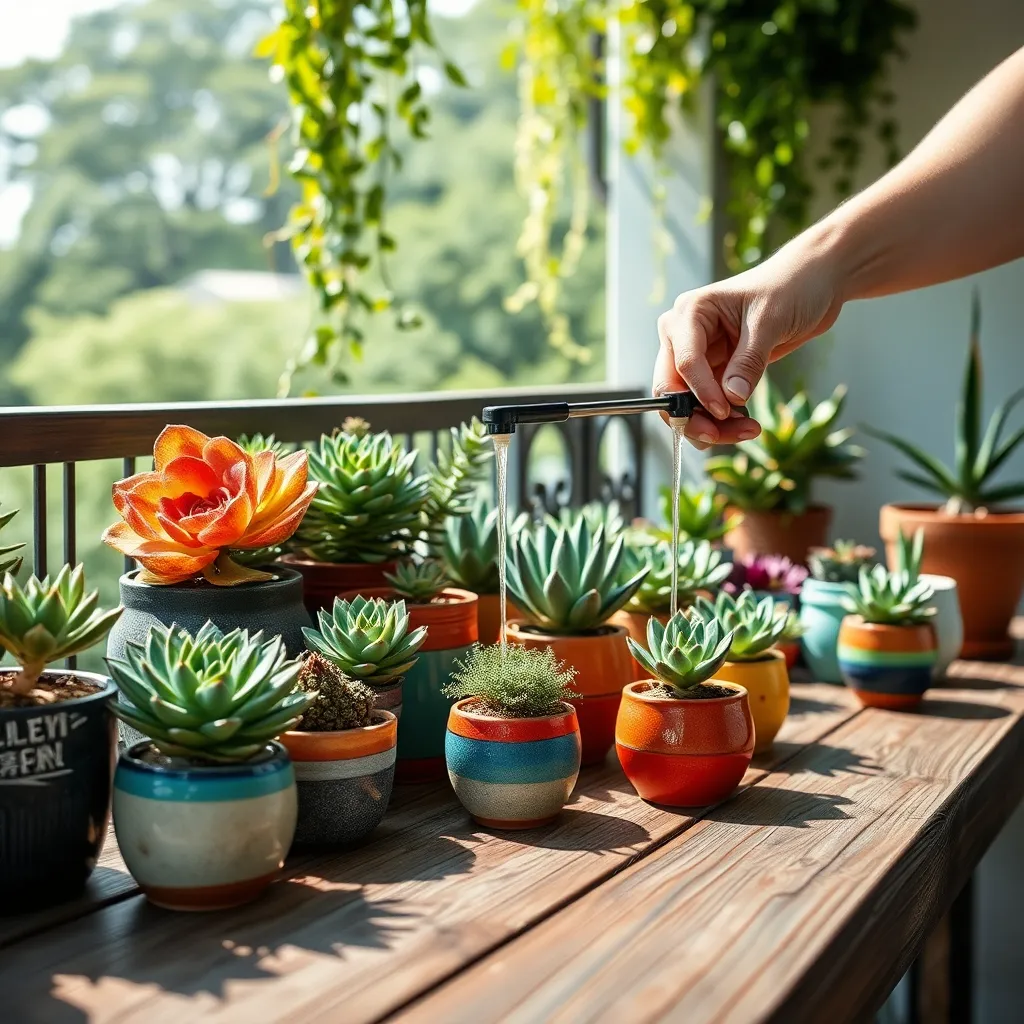
Succulents require adjustments in their watering routines as the seasons change to thrive. During the spring and summer, when growth is most active, succulents generally need more frequent watering.
In contrast, autumn and winter usually bring a dormant period for these plants, necessitating a reduction in watering frequency. It’s essential to let the soil dry out completely between waterings during these cooler months to prevent root rot.
For those living in regions with cold winters, consider moving your succulents indoors to protect them from freezing temperatures. In this indoor environment, they will typically require even less water due to lower light levels and reduced evaporation.
Observing your succulents’ leaves can provide clues about their water needs; plump leaves indicate sufficient moisture, while shriveled ones suggest a need for watering. Adjusting your watering schedule in response to these visual cues is a vital skill for succulent care.
Conclusion: Growing Success with These Plants
In nurturing both succulents and relationships, understanding is key. We’ve explored five essential concepts: recognizing the unique needs of your partner (just as each succulent requires specific care), ensuring consistent communication (akin to regular watering), creating a supportive environment (like providing adequate sunlight), knowing when to give space (similar to allowing soil to dry out), and identifying signs of distress early (as you would with plant health issues). Now, take action by reflecting on one area where you can enhance your relationship today. Perhaps it’s through a heartfelt conversation or a small gesture of appreciation.
Remember, thriving relationships, like well-cared-for succulents, require ongoing attention and love. Bookmark this article as a handy guide to revisit whenever your relationship needs a little extra TLC. By doing so, you’ll have a ready reference to help navigate the nurturing process.
Looking ahead, with consistent effort and mindfulness, your relationship can flourish beautifully over time. Embrace these strategies, and watch as both your love and your succulents grow resilient and vibrant. Together, let’s cultivate relationships that stand the test of time.
